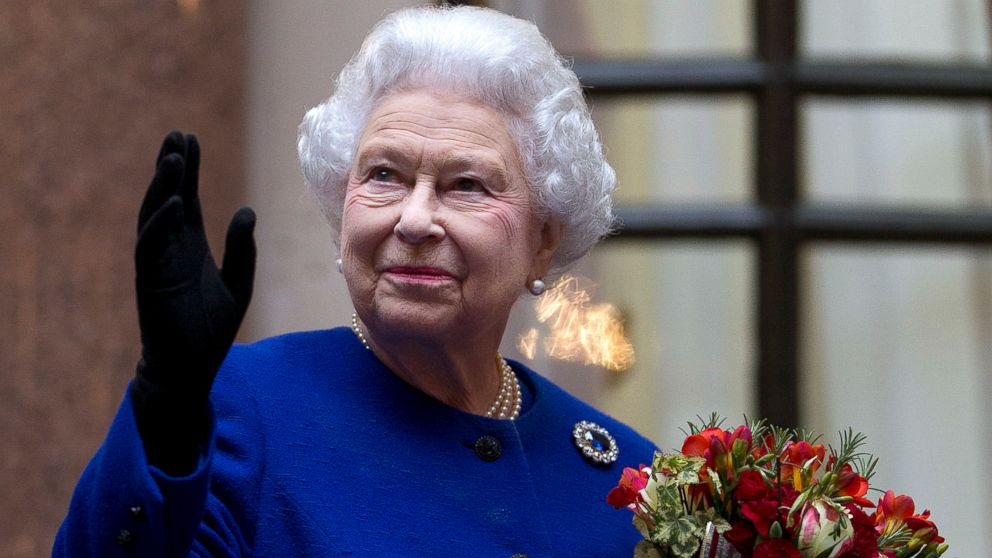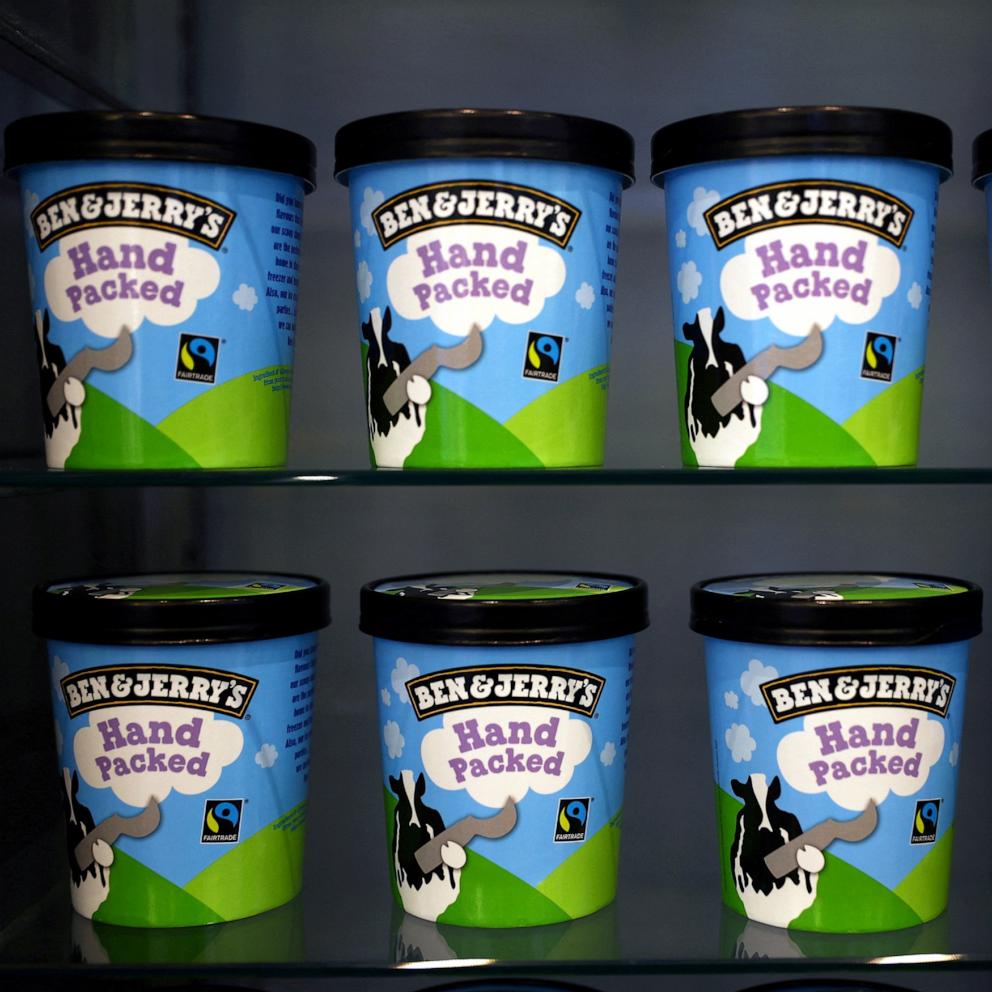Queen Elizabeth, longest-reigning British monarch, dies at 96
Queen Elizabeth II, the longest-reigning monarch in British history, has died. She was 96 years old.
"The Queen died peacefully at Balmoral this afternoon," Buckingham Palace said in a statement Thursday afternoon. "The King and The Queen Consort will remain at Balmoral this evening and will return to London tomorrow."
The queen is preceded in death by her husband of more than 70 years, Prince Philip, who died April 9, 2021, at the age of 99.
Queen Elizabeth is survived by her three sons, Princes Charles, Andrew and Edward; one daughter, Princess Anne; eight grandchildren, Princes William and Harry of Wales, Princesses Beatrice and Eugenie of York, and Peter and Zara Phillips, as well as Lady Louise Windsor and James, Viscount Severn. She is also survived by 12 great-grandchildren.
Her eldest son, Charles, the Prince of Wales, succeeds her as king. His wife, Camilla, the Duchess of Cornwall, is expected to become queen consort, a title that Queen Elizabeth requested at the time of her Platinum Jubilee.
Charles's eldest son, Prince William, is now heir to the throne.
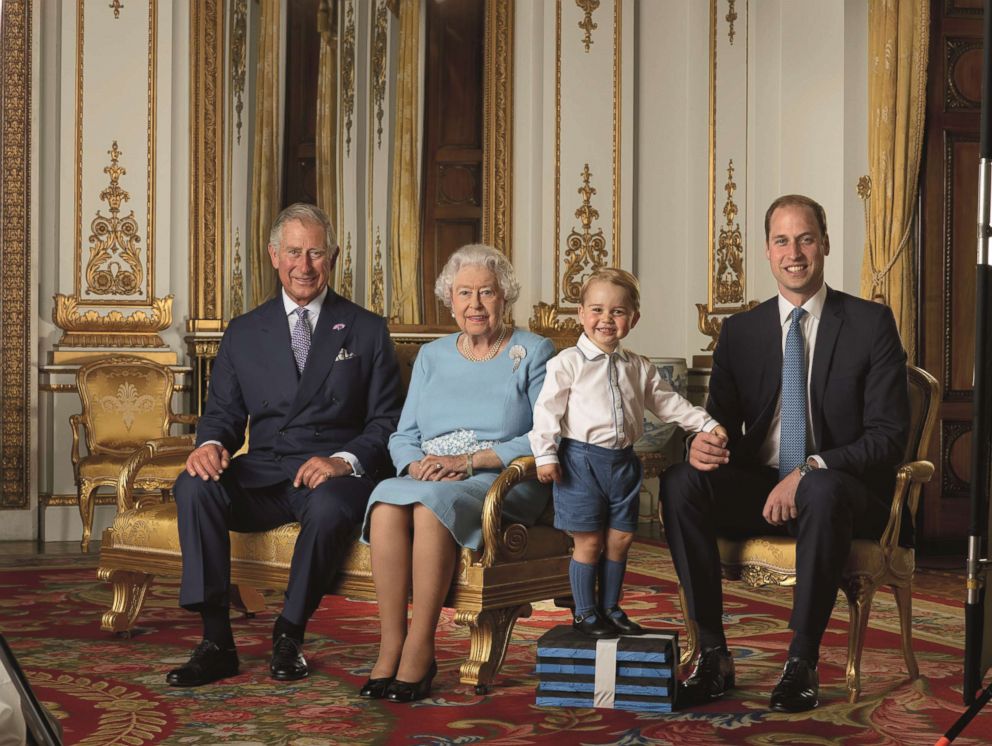
The queen was hospitalized in late October 2021 for what Buckingham Palace described as "preliminary investigations." After a one-night hospital stay, the queen returned home to Windsor Castle, where she resumed her work, the palace said at the time.
A few weeks later, on Nov. 14, the queen missed the annual Remembrance Sunday service after she sprained her back, Buckingham Palace said in a statement at the time.
In February 2022, the queen tested positive for COVID-19 but had only "mild cold-like symptoms" as a result of the virus, according to the palace.
Two months later, in April, the queen celebrated her 96th birthday at Sandringham, her country estate in Norfolk.
In June, the queen celebrated her Platinum Jubilee, marking 70 years on the throne. She attended just three events during the four-day celebration due to what Buckingham Palace described at the time as "some discomfort."
A history-making female monarch
When Queen Elizabeth came to the throne in 1952, some Britons were so thrilled by the young queen they declared it was a second "Elizabethan Age."
Elizabeth II would come to embody not only the British monarchy but a tradition of doing one's duty and maintaining a stiff upper lip.
On her 21st birthday, she pledged to her future subjects: "I declare before you all that my whole life, whether it be long or short, shall be devoted to your service."
It was a promise she never forgot.
Queen Elizabeth, the longest-lived British monarch, reigned through 14 American presidents, and just as many British prime ministers, proving herself a savvy stateswoman and a constant leader on the world stage.
The queen, who traveled on more than 271 state visits during her reign, was sometimes the only female on the stage with world leaders, and she always stayed mum on her personal political opinions, proving her mastery of "soft diplomacy."
As recently as 2021, she met with world leaders at a Group of 7 summit meeting in Cornwall in June, and hosted President Biden and the first lady, Jill Biden, at Windsor Castle afterward.
In addition to being sovereign of the United Kingdom and 15 Commonwealth realms, she was also the head of the Commonwealth, a voluntary association of 54 independent countries.
During her reign, she visited nearly every country in the Commonwealth -- missing only Cameroon and Rwanda -- and made many repeat visits, according to the royal family's official website.

Always committed to the service aspect of her role, the queen had links, either as royal patron or president, to over 600 charities, military associations, professional bodies and public service organizations, according to the royal family's official website.
Well into her 90s, the queen continued to attend royal engagements, from Buckingham Palace garden parties and receptions to knighting ceremonies, state banquets and travels throughout the Commonwealth.
She was a modern monarch who kept up with the times, including sending her first tweet in 2014 and publishing her first Instagram post in 2019.
During the coronavirus pandemic, Queen Elizabeth began doing video calls so that she could continue to connect with people while working from home.
Queen Elizabeth's path to the throne
Princess Elizabeth Alexandra Mary was born in London on April 21, 1926, a granddaughter of King George V and the first child of Prince Albert, the Duke of York, and his wife, Lady Elizabeth Bowes-Lyon, a daughter of the Scottish nobility.
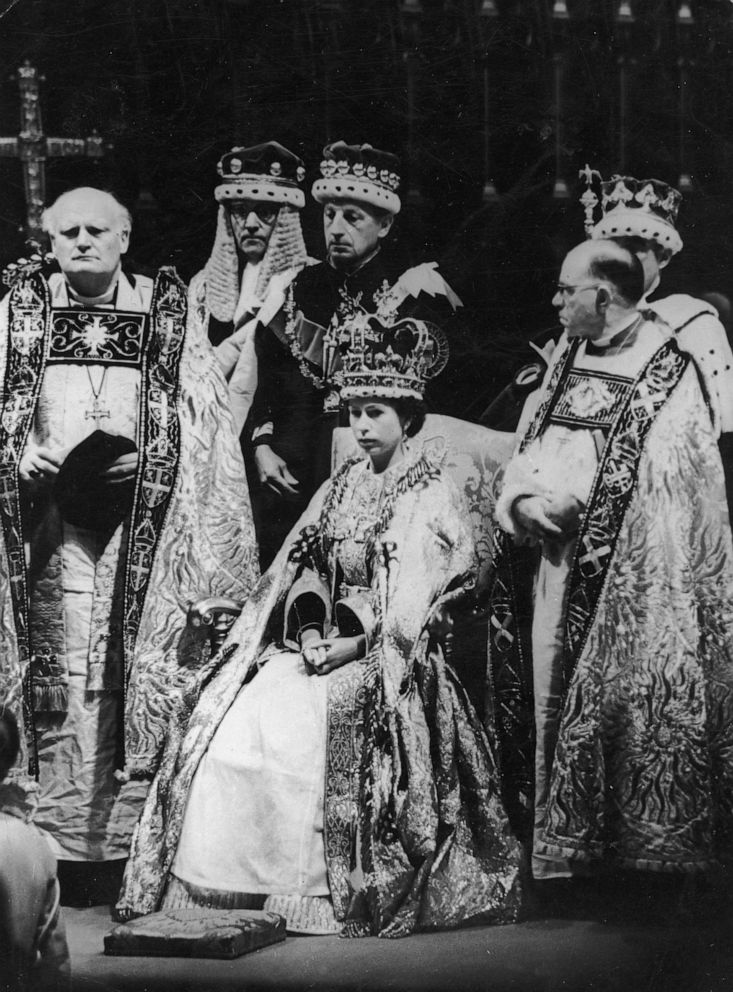
Four years after Elizabeth's birth, the Yorks had a second daughter, Princess Margaret Rose.
The family's lives changed in 1936, when King George V died, and his eldest son became King Edward VIII.
Edward VIII -- known to Elizabeth as "Uncle David" -- began a relationship with a woman named Wallis Simpson, an American divorcee.
The romance triggered a constitutional crisis. When Edward decided to give up his throne to marry Simpson, Elizabeth's father, Albert, ascended to the throne.
Elizabeth was just 10-years-old when her father became King George VI, having adopted his father's name.
With no sons in the family, the heir to the throne would be George's elder daughter -- Elizabeth.
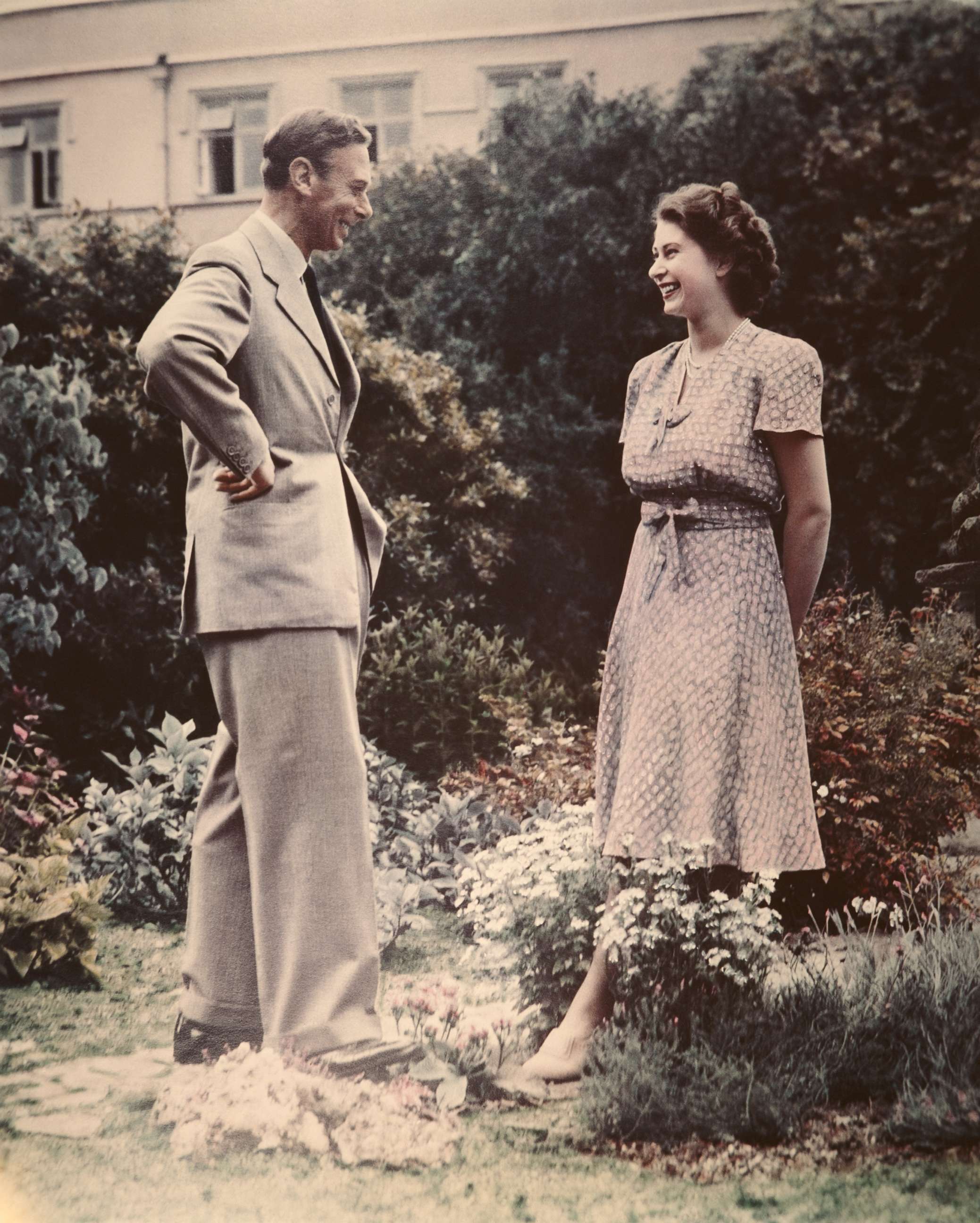
In 1940, during World War II, Princess Elizabeth, then 14, made her first broadcast, addressing the children of Britain, especially wartime evacuees.
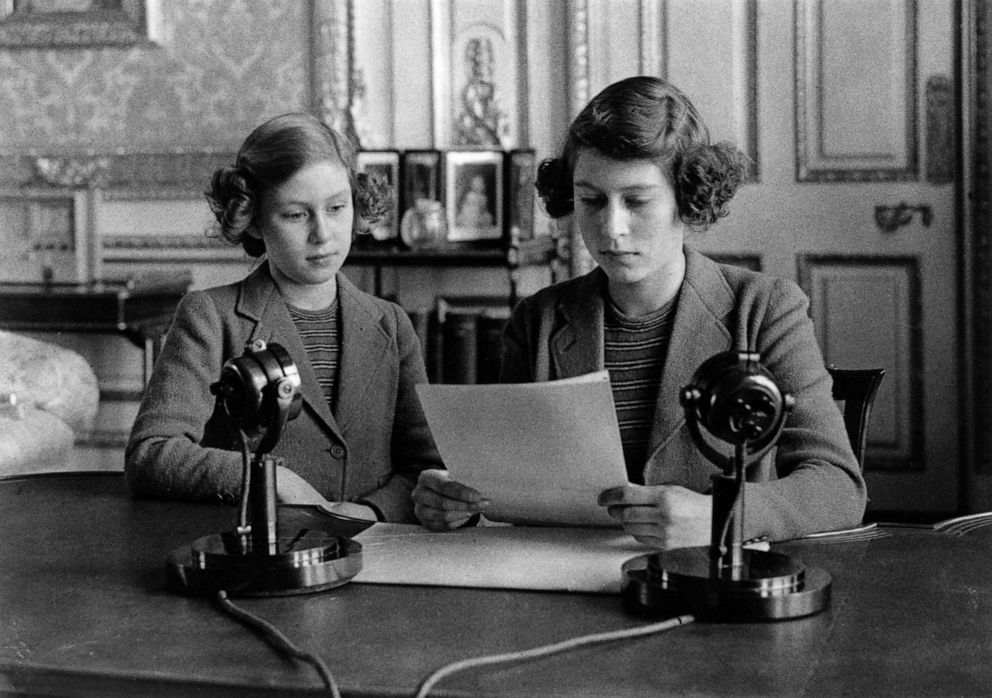
When the war ended, she began to carry out public engagements, including in 1947, when she made her first official tour overseas, joining her parents and sister on a visit to South Africa.
Love and marriage
In1939, when then-Princess Elizabeth visited the Naval War College with her family, she reconnected with a young Prince Philip of Greece and Denmark, who had served in the British Navy during the war and was a student at the college.
Like Elizabeth, he was a great-great-grandchild of Queen Victoria.
The couple exchanged letters and, in 1946, Philip, then in his mid-20s, was given permission by King George VI to marry his daughter, on the condition that they wait until Elizabeth was 21.
The couple married on Nov. 20, 1947, in a royal wedding in Westminster Abbey. Philip renounced his Greek and Danish titles and adopted the anglicized surname of his mother's family, calling himself Lt. Philip Mountbatten.
For several years after their marriage, Philip and Elizabeth lived a relatively normal life. He continued to serve in the Royal Navy, and the couple soon had their two oldest children, Prince Charles, in 1948, and Princess Anne, in 1950.
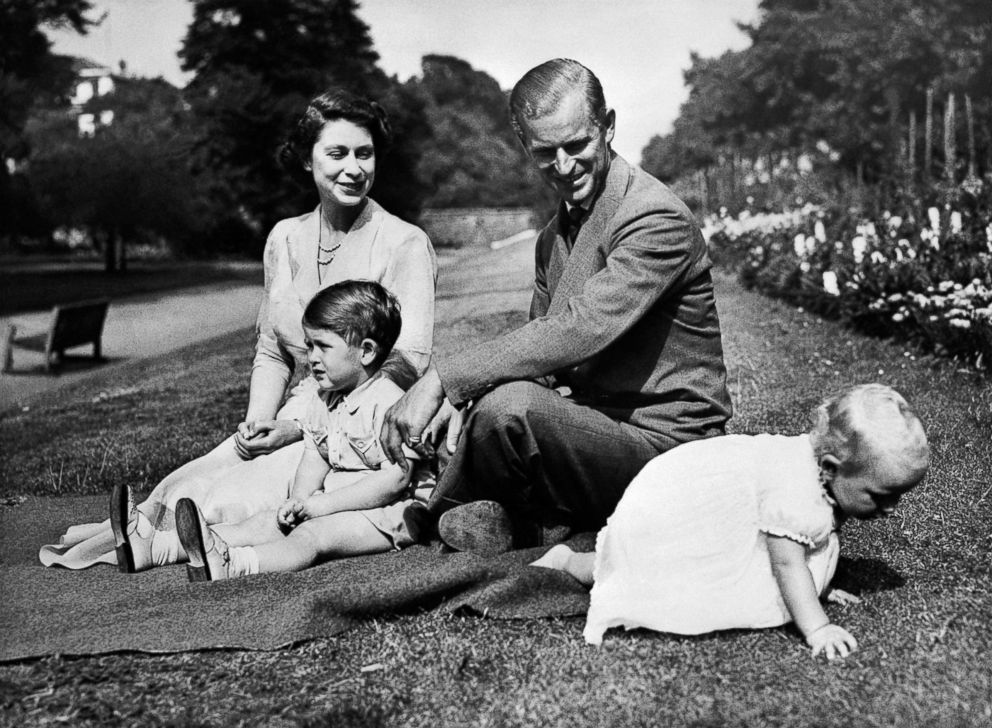
Philip and Elizabeth's lives changed in 1952, when, while Elizabeth was touring Kenya, her father, King George VI, died.
She became Queen Elizabeth II at the age of 25, and Philip gave up his career in the Royal Navy to support his wife.
Elizabeth becomes queen
As if heralding a new, modern era, Elizabeth's coronation on June 2, 1953, was broadcast on radio and television.
The new queen was a busy woman. She met regularly with the prime minister and other cabinet members and saw all cabinet papers as well as all important Foreign Office telegrams. She was also supreme governor of the Church of England.
She presided over a number of ceremonies, such as the opening of Parliament and the Trooping the Color; hosted heads of state of the Commonwealth and other countries; conducted official visits overseas; served as head of the British Navy, Army and Air Force; and served as patron of more than 700 organizations.
She also found time to pursue her own interests as a horsewoman and dog owner.
The queen and Prince Philip also expanded their family, welcoming their third child, son Prince Andrew, in 1960 and their fourth child, Prince Edward, in 1964.
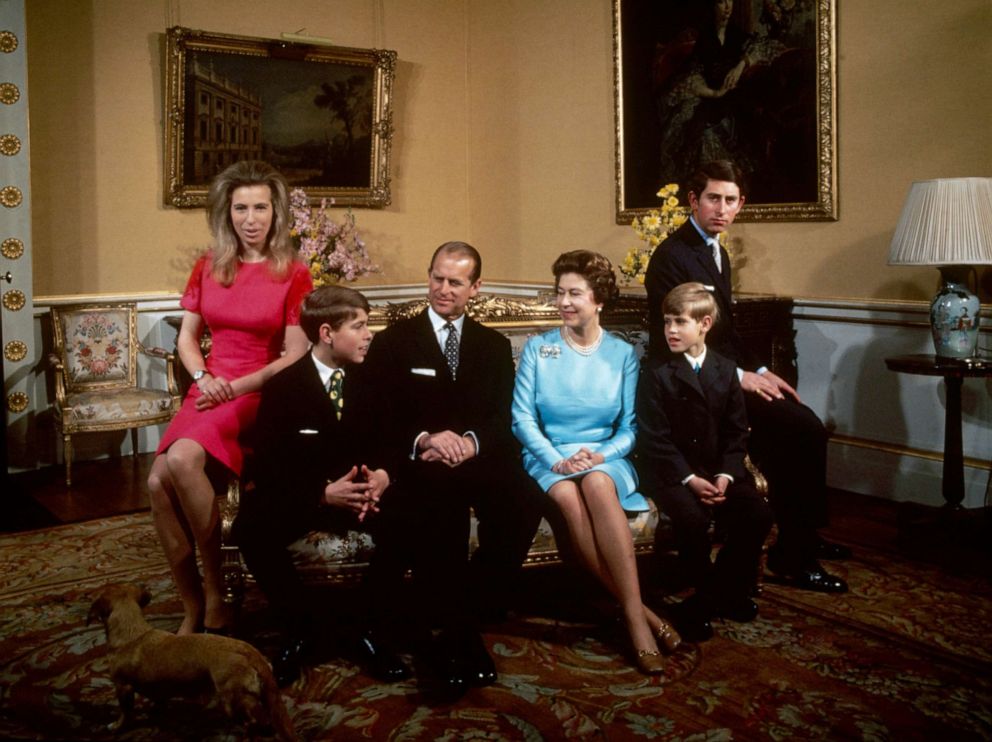
Royal family faces personal drama
Although some modernizations had crept in, Elizabeth both lived and reigned much as her father and her grandfather had. But other members of her family were having a harder time keeping up the Edwardian traditions, and their foibles overshadowed much of her later reign.
Princess Margaret had given up her plans to marry a British war hero, Group Capt. Peter Townsend, because he was divorced.
Margaret subsequently married photographer Antony Armstrong-Jones, who was named Earl of Snowdon. They had two children, but by 1978 the marriage ended in divorce, a move that had been taboo in the royal family since the days of Henry VIII.
Elizabeth's daughter, Princess Anne, married Capt. Mark Phillips in 1973. The queen became a grandmother in 1977, when Peter Phillips was born, followed by a sister, Zara, in 1981.
As the heir to the throne, Prince Charles faced heavy public scrutiny over whom he would marry.
In 1981, the 32-year-old prince married 20-year-old Lady Diana Spencer. The British people became smitten with their new princess, who added a new glamour to the House of Windsor.
Diana quickly giving birth to two sons, Princes William and Harry.
Charles and Diana's marriage was behind the scenes more emotionally fraught for both parties, according to accounts at the time.
Charles would later be accused by Diana of having an affair with his now-wife, Camilla, the Duchess of Cornwall, while Diana, for her part, by all accounts had a hard time adjusting to the pressures of royal life and felt that she received little support.
Meanwhile, Elizabeth's second son, Prince Andrew, had married Sarah Ferguson and been named the Duke of York. Andrew's naval career though often kept them apart and their marriage was soon on the rocks too.
'Annus horribilis'
As 1992 drew to a close, Elizabeth said in her annual Christmas broadcast that it had been an "annus horribilis."
Within that year, Andrew and Sarah were separated.
Princess Anne divorced her husband and subsequently married Navy Cmdr. Timothy Laurence.
But it was the marital woes of Charles and Diana that dominated the headlines. A journalist named Andrew Morton published "Diana: Her True Story," a book in which Diana's friends freely described her marriage as a sham, revealing Charles' interest in Camilla and Diana's own battles with bulimia.
Also in 1992, a fire ravaged Windsor Castle, the medieval fortress where Elizabeth had spent so much of her childhood. The royal family faced backlash from British taxpayers who learned they were expected to help pay for the repairs.
The queen's horrible year finally drew to a close with the announcement in December 1992 that Charles and Diana were separating.
Divorce and the death of Diana
The separation did not end the war of the Windsors.
Charles and Diana continued to feud, with the tabloids following every move.
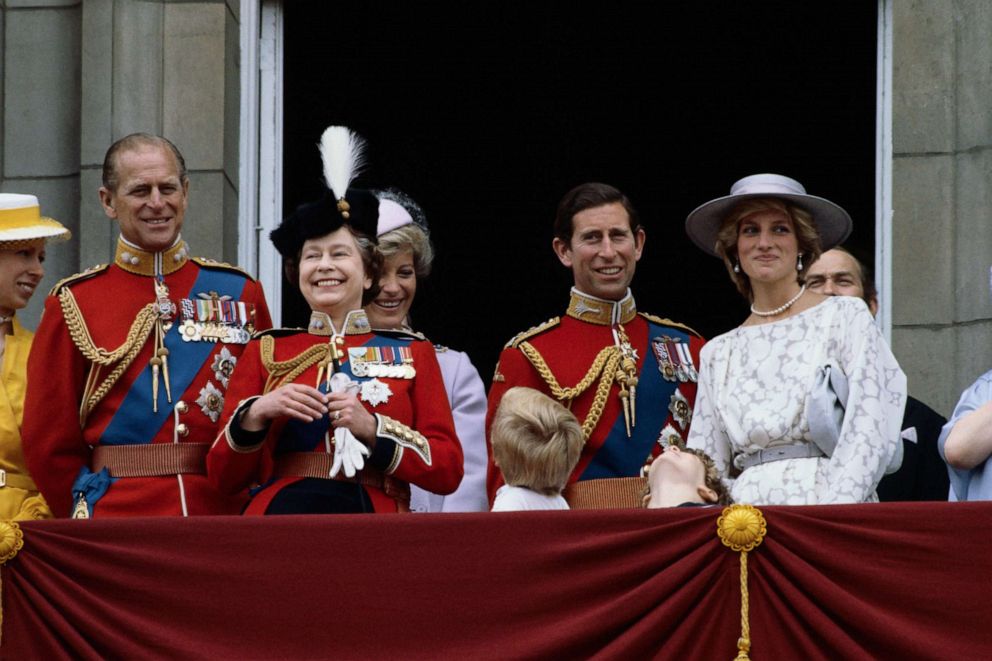
Many Britons started to question the value of the monarchy, and it was suggested that the succession should skip Charles altogether and go right to his son William.
After Charles and Diana each opened up to the press on their own to tell their sides of the story, the couple's divorce was finalized in August 1996.
Just one year later, on Aug. 31, 1997, Diana died following a car crash in the Pont D'Alma Bridge in Paris during which her car was pursued by paparazzi.
Queen under fire
The news of Diana's death at the age of 36 plunged Britain -- and indeed, much of the rest of the world -- into grief.
Millions of Britons left flowers and remembrances outside Buckingham Palace in Diana's memory.
The prime minister paid public tribute to the "people's princess." Flags everywhere were at half-staff. But the queen was nowhere to be seen.
Elizabeth and Philip had been at Balmoral Castle in Scotland with Princes William and Harry, then 15 and 12, respectively, when the accident occurred.
But when people in front of Buckingham Palace began holding up signs reading "Where is our queen when we need her?," Elizabeth got the message.
She returned to London with her grandsons, and gave an address to the nation praising her former daughter-in-law. At Diana's funeral procession, the queen was seen bowing as the cortege passed by.
A sacred duty
In 2002, Britain celebrated the queen's golden jubilee, marking her 50th anniversary on the throne.
Critics wondered whether the public could get excited about a tarnished royal family headed by an aging monarch, but the crowds turned out in droves for a special jubilee concert, and Elizabeth presided over a number of special events marking the anniversary.
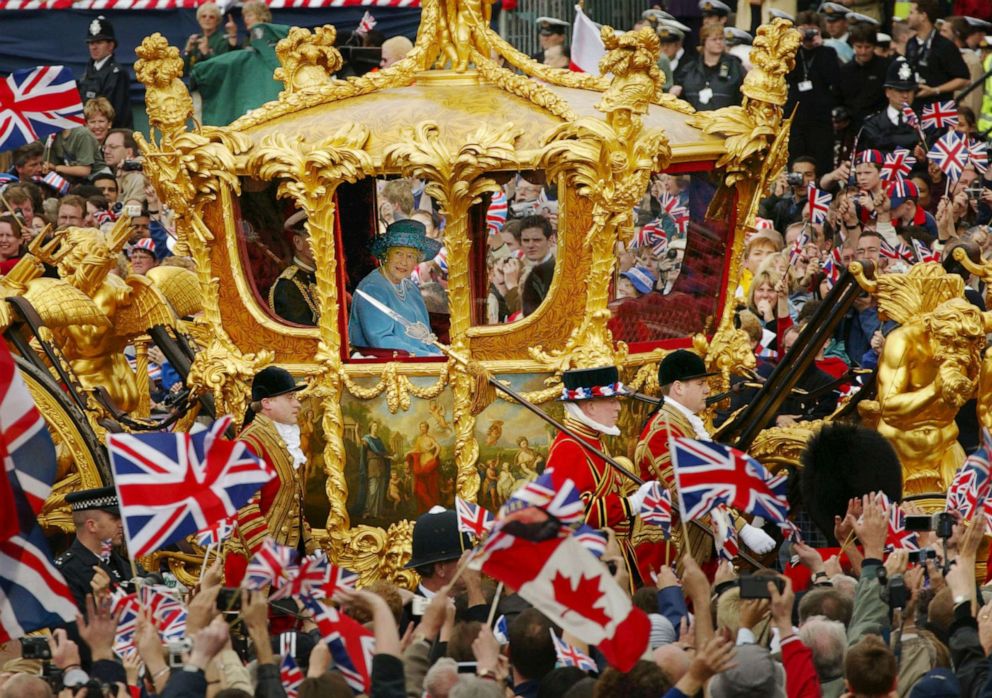
But her jubilee year was marred by two deaths.
On Feb. 9, her younger sister, Princess Margaret, died at age 71.
Then their mother, the Queen Mother, died on March 30 at the age of 101.
As Elizabeth herself aged, some wondered whether she would retire, allowing her son Charles to become king while still in middle age. But the queen had no intention of abdicating.
Diamond Jubilee and family scandal
In 2011, Queen Elizabeth watched as the future heir to her throne, her grandson, Prince William, wed Kate Middleton, now the Duchess of Cambridge, in a royal wedding at Westminster Abbey seen as breathing fresh life into the monarchy.
One year later, in 2012, Queen Elizabeth celebrated her Diamond Jubilee -- 60 years on the throne. The festivities included a concert with Paul McCartney and Elton John, a carriage procession through the streets of London and the queen's appearance with her family on the balcony at Buckingham Palace.
She was only the second British monarch in 1,000 years to make it that far, and her reign was characterized by her decades of determination and fortitude.
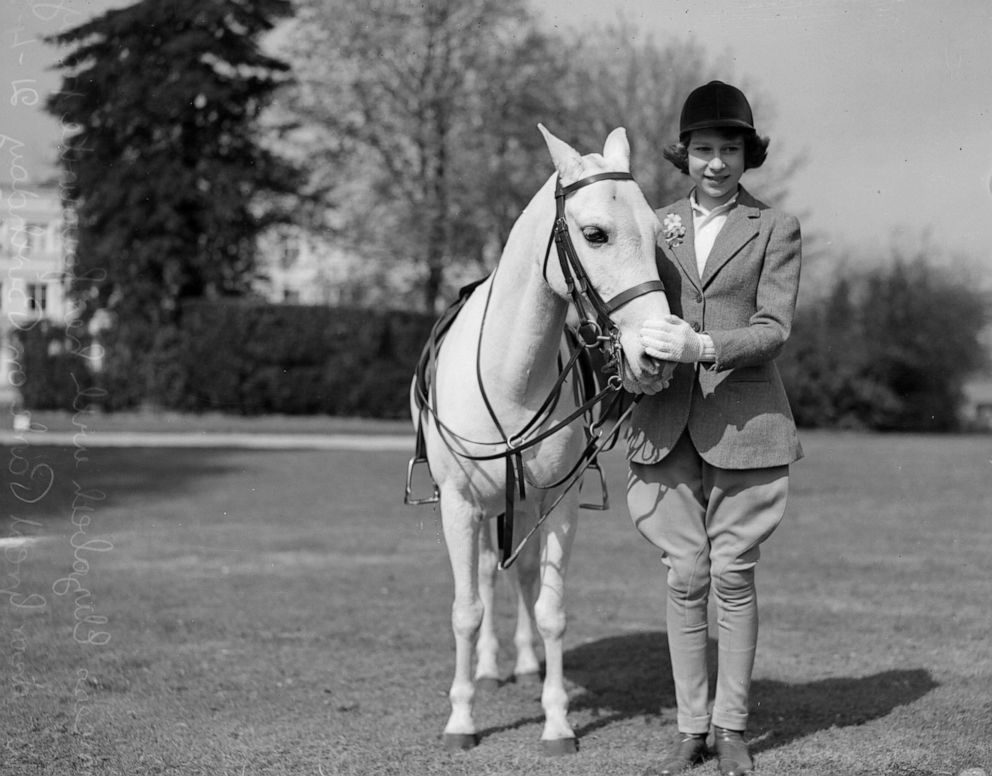
Several years later, in 2019, the queen faced a less uniting moment for her family and the monarchy when her son Prince Andrew found himself again under scrutiny for his relationship with Jeffrey Epstein, a convicted sex offender with whom Andrew was photographed walking through New York's Central Park shortly after Epstein's prison sentence ended in Florida.
When Epstein faced new criminal charges in 2019, Andrew faced allegations that he had sex on multiple occasions with an American teenager, which he categorically denied.
The criticisms grew to the point that Andrew announced in November 2019 that he would step back from public duties "for the foreseeable future," saying he was doing so with Queen Elizabeth's permission.
Two days after the announcement, Andrew was spotted riding horses with Queen Elizabeth, a move seen by some royal watchers as a signal the queen was sticking by her son's side.
A growing family
Even amid the controversies, as Queen Elizabeth continued her history-making reign, she watched as her family grew through marriages and children's births.
The queen and Prince Philip were the parents of eight grandchildren, Princes William and Harry of Wales, Princesses Beatrice and Eugenie of York, Peter and Zara Phillips, as well as Lady Louise Windsor and James, Viscount Severn.
The queen's oldest grandchild, Peter Phillips, brought her first two great-grandchildren into the world with his daughters, born in 2010 and 2012. Peter's sister, Zara Phillips, would go on to have three children.
Prince William and Kate, the Duke and Duchess of Cambridge, went on to have three children, Prince George, Princess Charlotte and Princes Louis.
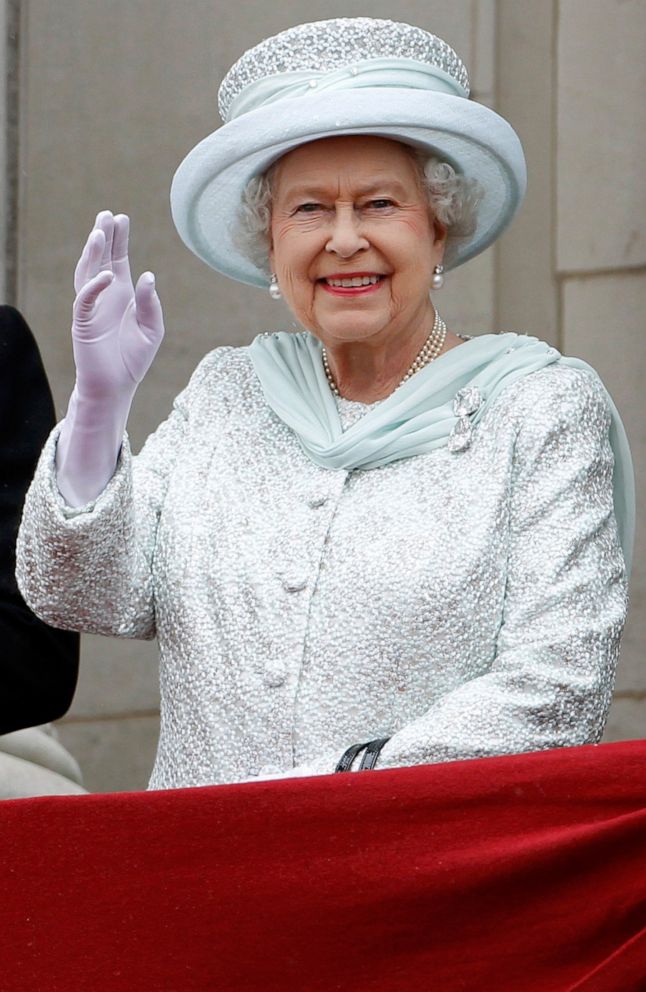
Princess Eugenie, the younger daughter of Prince Andrew and Sarah Ferguson, and her husband Jack Brooksbank welcomed a son in February 2021, the ninth great-grandchild for Queen Elizabeth.
Eugenie's sister, Princess Beatrice, gave birth to a daughter on Sept. 18, 2021, with her husband, Edoardo Mapelli Mozzi. The couple named their daughter Sienna Elizabeth Mapelli Mozzi, a nod to her great-grandmother.
Prince Harry and Meghan, the Duchess of Sussex, gave the queen two more great-grandchildren with the birth of their son, Archie, in 2019 and their daughter, Lilibet, in 2021.
Lilibet, who goes by Lili, is also named after the queen, whose family nickname is Lilibet.
Harry and Meghan's exit from the royal family
Harry and Meghan's high-profile wedding at St. George's Chapel in 2018 also seemed to breathe new life into the monarchy, as William and Kate's had done seven years before, but the honeymoon for the couple and royal life was short-lived.
Harry and Meghan announced in January 2020 that they would "step back" as senior working members of the royal family, a decision that sent shockwaves among royal watchers and the royal family, and forced the queen to again step in to keep her family and the monarchy together.
Queen Elizabeth oversaw a high-stakes family summit to determine Harry and Meghan's future, which ultimately saw them forgo royal life to start fresh with their family in California.
The royal family was criticized for not finding a place in the monarchy for Harry and Meghan, who were greeted as rock stars on overseas tours and were seen as bringing a new and more diverse future to the royal family.
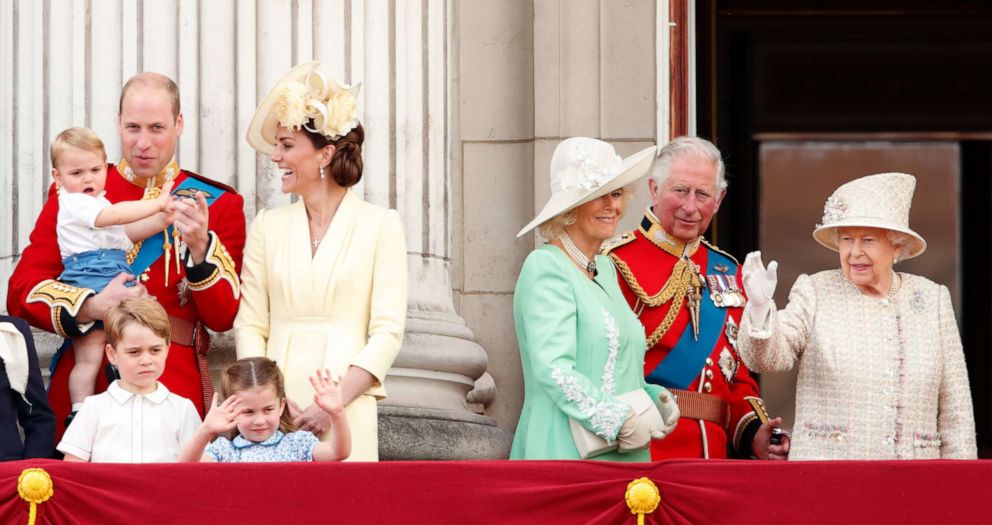
Just over one year after leaving their royal roles, Harry and Meghan gave a bombshell interview to Oprah Winfrey in which they made claims of racism, spilled family tensions into the public eye and said they face a lack of support, both financially and emotionally.
Despite the allegations, Harry described a great fondness for the queen, a sign of the enduring legacy she had on her family.
"I've spoken more to my grandmother in the last year than I have done for many, many years," said Harry, revealing he and Meghan and Archie have video calls with the queen. "My grandmother and I have a really good relationship and an understanding, and I have a deep respect for her. She's my commander-in-chief, right? She always will be."
A pandemic and Prince Philip's death
As Queen Elizabeth dealt with the fallout from her family's troubles, a deadly coronavirus pandemic swept the globe in 2020, bringing to a halt the usual royal public appearances with pomp and circumstance.
The queen and Prince Philip, who were high risk for COVID-19 because of their age, spent much of the pandemic quarantined together at Windsor Castle, a royal residence located about one hour outside of London.
No longer able to make in-person appearances, Queen Elizabeth adapted with the times as she always has, participating in video calls with people from across the Commonwealth.
The time at home at Windsor Castle afforded the queen more time than she would normally have had with Philip, who retired from official royal duties in 2017.
Philip was hospitalized for one month in early 2021 before returning to Windsor Castle, where he died on April 9, 2021, at the age of 99.
Just weeks later, on April 21, 2021, Elizabeth celebrated her 95th birthday.
"I have, on the occasion of my 95th birthday today, received many messages of good wishes, which I very much appreciate," the queen said in a statement at the time. "While as a family we are in a period of great sadness, it has been a comfort to us all to see and to hear the tributes paid to my husband, from those within the United Kingdom, the Commonwealth and around the world."
A history-making Platinum Jubilee
In 2022, Elizabeth marked yet another first in her reign, becoming the first British monarch to reach a Platinum Jubilee -- 70 years on the throne.
On Feb. 5, 2022, the queen made her first public, in-person appearance in several months when she met with representatives from local community groups in the ballroom at Sandringham House, her Norfolk estate, to celebrate the start of her Platinum Jubilee.
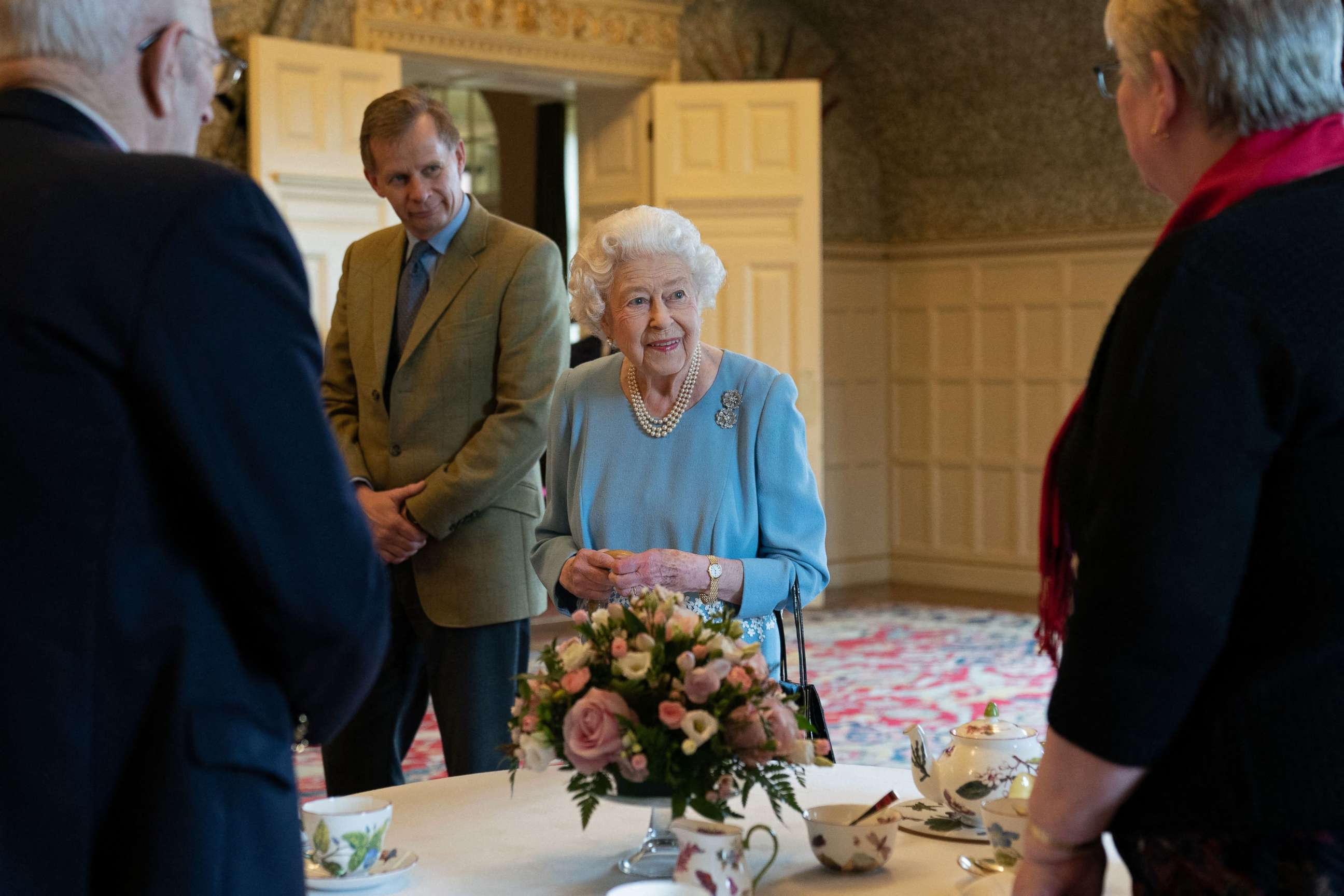
That same day, she released a statement, renewing the pledge of service she gave in 1947, on her 21st birthday.
"As I look ahead with a sense of hope and optimism to the year of my Platinum Jubilee, I am reminded of how much we can be thankful for. These last seven decades have seen extraordinary progress socially, technologically and culturally that have benefitted us all; and I am confident that the future will offer similar opportunities to us and especially to the younger generations in the United Kingdom and throughout the Commonwealth," the queen wrote. "I am fortunate to have had the steadfast and loving support of my family."
The queen continued, "I was blessed that in Prince Philip I had a partner willing to carry out the role of consort and unselfishly make the sacrifices that go with it. It is a role I saw my own mother perform during my father's reign."
In her statement, Elizabeth also set a path for the monarchy moving forward in her public request that Camilla become Queen Consort when Charles becomes king.
"I remain eternally grateful for, and humbled by, the loyalty and affection that you continue to give me," she wrote. "And when, in the fullness of time, my son Charles becomes King, I know you will give him and his wife Camilla the same support that you have given me; and it is my sincere wish that, when that time comes, Camilla will be known as Queen Consort as she continues her own loyal service."

In June, the public celebrated the queen with a four-day celebration of her Platinum Jubilee.
The celebration included everything from Trooping the Color to a National Service of Thanksgiving, a star-studded concert led by Diana Ross and thousands of lunches and street parties across the country. At the end of celebration, Elizabeth appeared on the balcony of Buckingham Palace alongside Charles and Camilla and William and Kate and their three children, George, Charlotte and Louis.
The queen also shared a written thank you message at the end of the celebration.
"I have been inspired by the kindness, joy and kinship that has been so evident in recent days, and I hope this renewed sense of togetherness will be felt for many years to come," she wrote. "I thank you most sincerely for your good wishes and for the part you have all played in these happy celebrations."
The queen signed her message with her first name, Elizabeth, followed by the letter R, which stands for Regina, the Latin word for queen.
